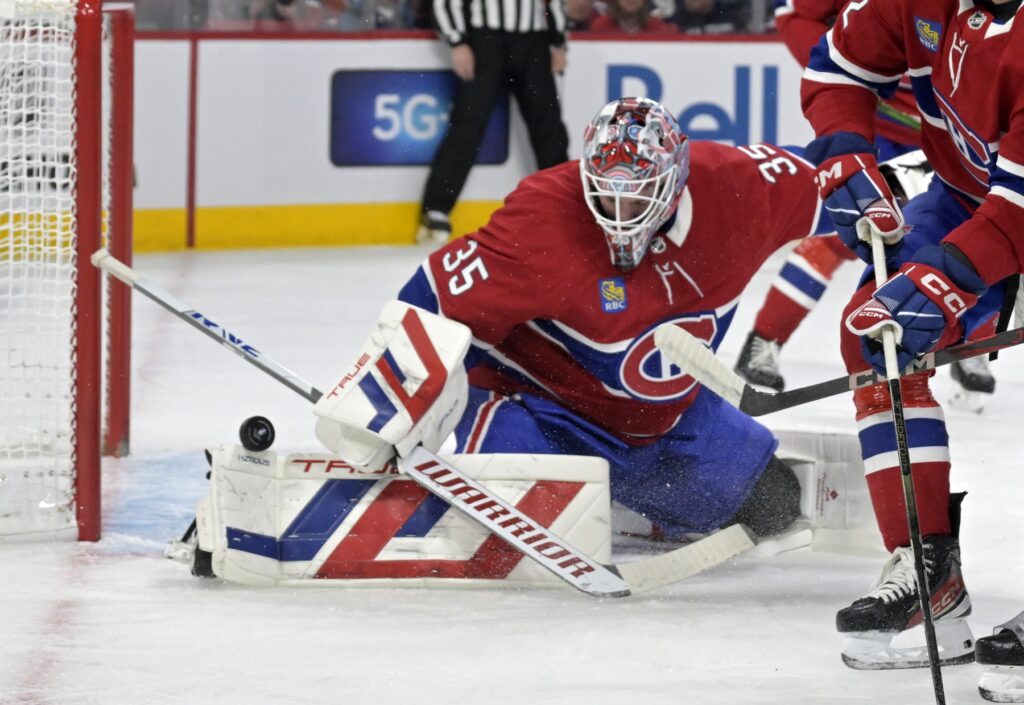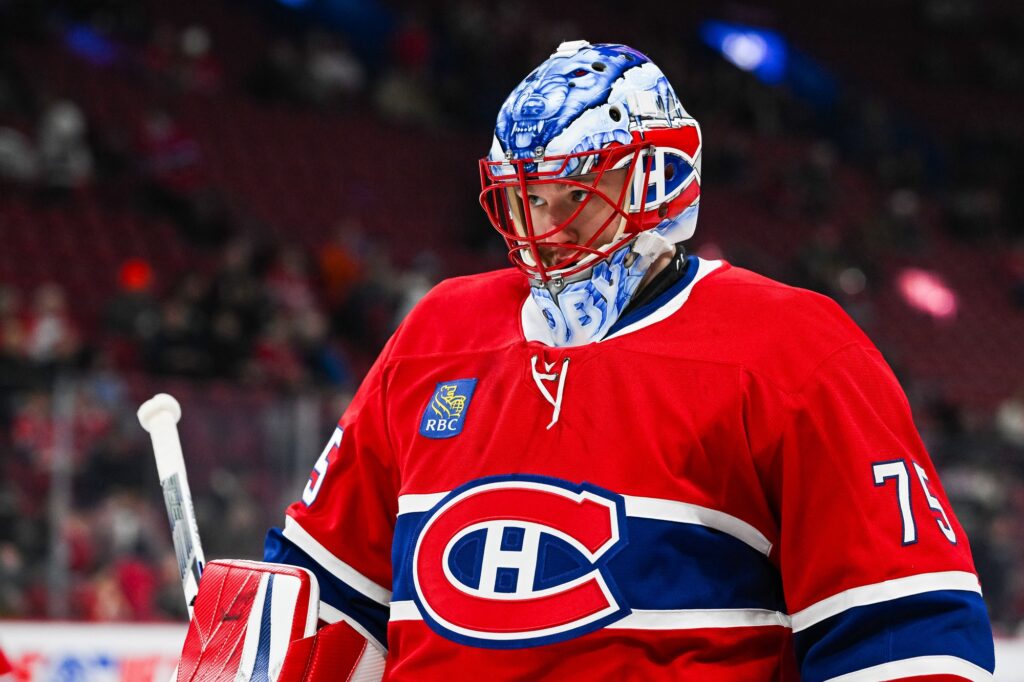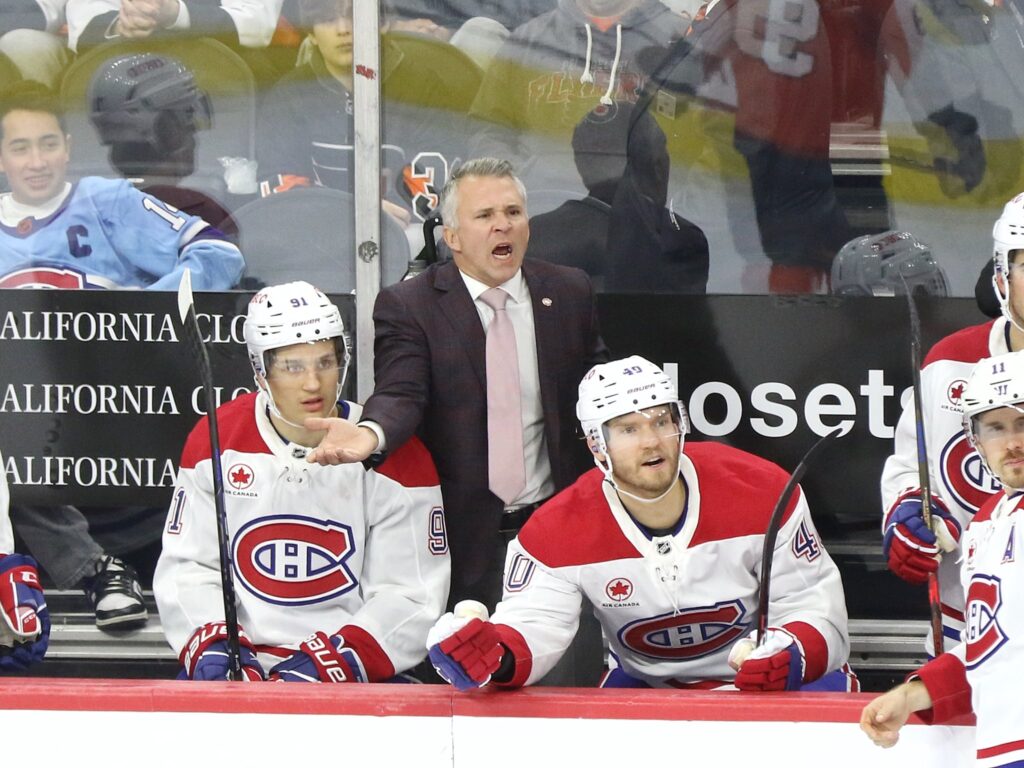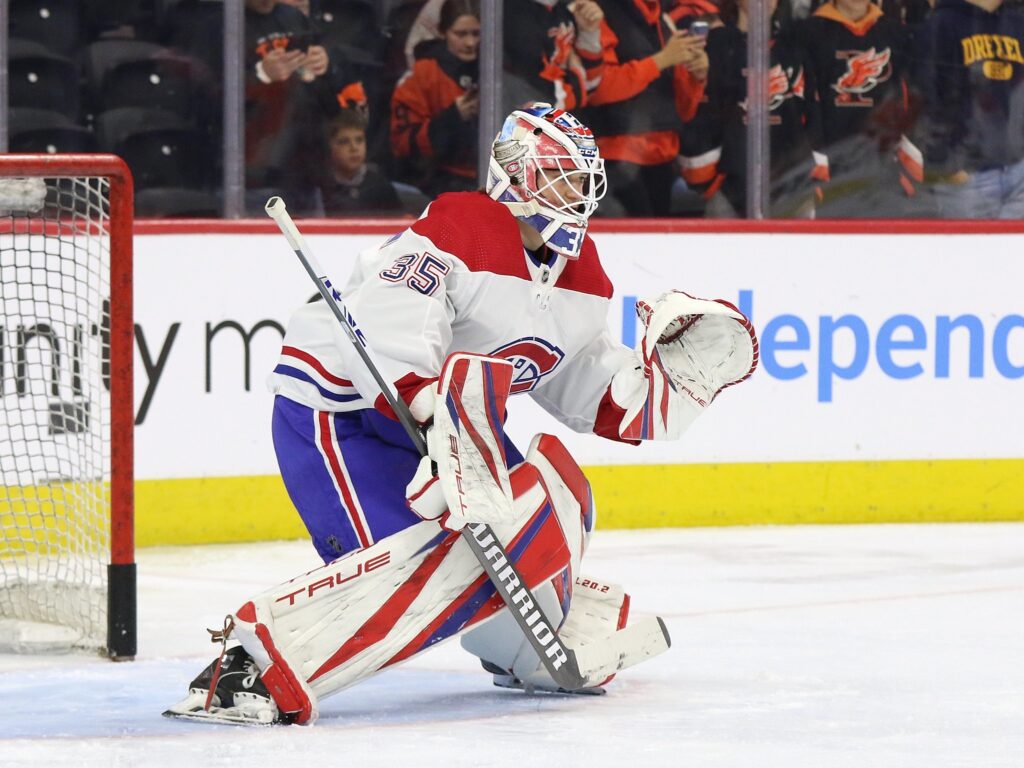Early-season storylines in the NHL are often a mix of statistical noise and genuine trends. In Montreal, just weeks into the 2025-26 campaign, a significant development is unfolding in the one area that looked most settled: the blue paint. The Canadiens don’t have a goaltending crisis; they have a goaltending competition. And for a team looking to build on last season’s playoff appearance, this burgeoning battle between incumbent Samuel Montembeault and challenger Jakub Dobeš is the best-case scenario management could have hoped for.
Previously on the EDGE – Canadiens Front Office Rewarded for Swift Rebuild – Gorton & Hughes Get Extensions
The Incumbent’s Crossroads
Let’s be clear: Montembeault earned the right to be the undisputed number-one goaltender for this franchise. His 2024-25 campaign was a primary reason a young Canadiens squad found itself in the postseason. He carried an immense workload—perhaps too immense, as we’ll see—and has the full trust of Coach Martin St. Louis. That trust grants him the rope to navigate a rocky start.
And the start has been rocky.

Through his first four starts, Montembeault’s numbers are, frankly, alarming for a team with playoff aspirations. He’s posted a 2−2−0 record, which is salvageable, but his 3.26 goals-against average (GAA) and .857 save percentage (SV%) are well below the league standard.
For the analytics-inclined, the underlying numbers paint an even starker picture. Montembeault currently ranks among the three least effective goaltenders in the league in Goals Allowed Above Expected, sitting at a challenging +4.4. The specific issue? High-danger chances. Opponents are converting on premium opportunities, with Montembeault stopping only 13 of 19 high-danger shots (a .684 SV%).
Given that he finished last season with nearly 15 Goals Saved Above Average (GSAA), this early performance is almost certainly an aberration. But hockey is a game of confidence, and his appears rattled. The door, which was firmly shut just a month ago, is now ajar.
The Challenger’s Arrival
Stepping confidently through that open door is 24-year-old Jakub Dobeš. Pegged as a capable backup to start the year, Dobeš has seized his opportunities with a level of play that has forced a discussion among fans and, more importantly, within the coaching staff.
The contrast in performance is impossible to ignore. In his three starts, Dobeš is a perfect 3−0−0. His peripheral numbers are sparkling: a 1.63 GAA and a .939 SV%.

Again, the advanced metrics tell the tale. While Montembeault is bleeding goals against expectations, Dobeš is ranked fifth in the NHL with five goals saved above average (GSAA) at 5v5. And that critical weakness for Montembeault? It’s Dobeš’s greatest strength. The young netminder has been a wall against quality chances, stopping 16 of 18 high-danger shots for a dominant .889 SV%.
This isn’t just a goalie on a hot streak; it’s a fundamental improvement in his game. Dobeš himself noted he felt “scrambly” last year, whereas this season he is focused on being “compact and subtle.” That technical refinement is translating. Coach St. Louis, who felt Dobeš “deserved” the recent start against Buffalo, praised his 30-save performance as a display of “simple efficiency.” He looks calm, solid, and technically sound beyond his years.
Also on the EDGE – Analyzing the Canadiens’ Masterful Lane Hutson Extension
Why This “Controversy” is a Win for the Canadiens
A vocal segment of the fanbase might be calling for an immediate change, but the organization views this situation as an absolute positive. Just 12 months ago, the goaltending picture was shaky, dependent entirely on one man. Today, it’s a position of strength.
The most significant benefit is workload management. The Canadiens’ brass has not forgotten last season. Montembeault was leaned on for 62 regular-season games and was visibly fatigued by the end, culminating in a torn groin during the playoffs. That model isn’t sustainable for a team with ambitions deeper than just making the dance.
“We have to manage their workloads,” St. Louis acknowledged, noting the grind of an 82-game schedule. Having two capable netminders provides the flexibility to navigate back-to-backs and long road trips without a significant drop-off in quality.
Furthermore, this dynamic fosters the exact internal competition St. Louis preaches. The coach is a firm believer that performance, not tenure, should dictate ice time. Dobeš’s push keeps Montembeault sharp and accountable. It prevents complacency and forces the veteran to fight his way out of his slump, which will ultimately make him better.

In the long run, this is the path to the modern NHL “1A/1B” tandem. The era of the 70-start goaltender is fading. Successful teams rely on a partnership. If Dobeš continues to prove he is for real, the Canadiens can comfortably move toward a 60/40 or even 55/45 split, ensuring both men are fresh and sharp for a potential playoff run in April.
The Immediate Decision Point
This brings us to the immediate tactical dilemma for St. Louis. The Canadiens are heading west for a difficult back-to-back set against Calgary and Edmonton. Logic dictates both goalies will play one game. But who gets the nod for the first, and arguably more significant, game on Wednesday night in Calgary?
As of Tuesday, St. Louis had not named his starter, calling it a “50-50” decision.
This is the uncomfortable part of the job. Does he protect the historical hierarchy and his veteran’s confidence by giving Montembeault the start, sending the message that it’s still his net? Or does he reward Dobeš’s objectively superior performance and ride the hot hand?
There is no easy answer, and the choice will be telling. But for the Montreal Canadiens organization, the fact that this is even a difficult decision is a monumental victory. The goaltending pipeline, once a question mark, is now providing answers—and high-quality ones at that.
Created with the aid of Gemini AI
